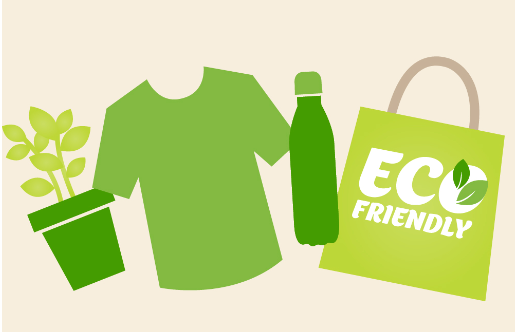We’ve all seen Back on Track products advertised, and with many new competitors entering the market with similar products, I’m sure we’ve all asked ourselves several questions: Do these products work? If so, how? Is it worth the cost?


The question of cost is likely a matter of opinion, but there is some science behind these products, which mainly use ceramic textiles that work using what is called far infrared radiation (FIR). In the most basic of terms, each of these companies has infused the base material of their products, be it sheets, blankets, or leg wraps, with particles that absorb heat and radiation from a horse’s body and re-emits it back towards them as a slightly different wave length of light – the long wave, or far, infrared radiation. This is merely a wavelength that is just beyond the spectrum of visible light. Remote controls work via infrared waves and half of sunlight is also infrared.
The next question becomes what do these long wavelengths actually do? This is where the research becomes muddier and it seems like every day we understand a bit more about how exactly these infrared waves affect horses and humans. What we do know is that the far infrared radiation causes the blood vessels to dilate, which in turn increases the circulation to the area where the fabric has been emitting these infrared waves. The dilated vessels and increased circulation bring immune cells and oxygen to these areas, which can decrease inflammation, help with healing, decrease recovery time and muscle tension. Far infrared can penetrate up to 4 cm in the body – meaning it could provide benefits to some joints or in the equine distal limb.

Another benefit to far infrared technology includes pain relief. A 2009 study by T. Burke, showed that far infrared radiation caused an increase in nitric oxide in tissues, which follows the same pathway to pain diminishment as opioids, though to a lesser degree. In human studies on Back on Track products, clinical trial participants did note decreased pain when using products infused with particles that emit far infrared radiation. This increase in nitric oxide through a series of enzymes triggered by the far infrared radiation is also what causes the dilation of blood vessels, leading to the increased circulation.

In 2003, a study by H. Toyokawa on rats showed a correlation in faster wound healing when the rats were exposed to far infrared radiation. There’s a lot of complicated factors that go into what exactly may be promoting the wound healing including: fibroblast proliferation, collagen production, and the extracellular matrix production, but suffice it to say that there’s a general scientific consensus regarding the benefits of far infrared radiation and wound healing.
Now, to the good stuff – what proof is there regarding the benefit to horses? A study in 2013 by T. Brownstone set out to answer just that. The study looked at whether or not the use of Back on Track products would affect the gait and locomotion of horses, and therefore subsequent performance. The forelimb and hind limb stride, as well as whether or not the horse was over or under tracking (hind limb protraction), was measured on 44 horses both before and after a 4 week period in which they wore Back on Track sheets under their regular blankets. The horses were observed twice weekly during each four week period, one where they wore a normal blanket liner, and the other where they wore the BoT sheet.

The results? There was a positive increase in all three parameters (forelimb stride length, hind limb stride length, and hind limb protraction during the period of time where the horses wore the BoT sheet. The horses also seemed to reach a peak improvement after roughly 1 week using the BoT sheets and then seemed to plateau. By the end of the four weeks, the effects seemed to almost decrease, which would fit with the manufacturer recommendations to wear the products in intervals with breaks, rather than consistently.

So, do Back on Track and similar products work? Science says that do! These products do not cause direct effects themselves, rather the FIR they reflect back to the horse and the horse’s physiologic reaction to the infrared rays are what cause the desired positive effects. Back on Track has done a good job of encouraging research into their products – if you find another brand that touts similar benefits, I would caution you to make sure they are reputable and have good science behind them. We’ve only hit the tip of the iceberg in regards to research into all that far infrared technology can do!
Are they worth the money? That’s up to you. The best thing about these products – there is absolutely no harm in them! Theoretically, they should provide benefits for any horse and Back on Track’s ceramic particles are permanently fused with their fabric, so they don’t degrade over time and you’d be buying a quality product that could last for years. And, if you keep your eyes open, you’ll sometimes see BoT products appear for sale used on sites such as Facebook or TTE!
*this article mainly focused on BoT products, since that is where there is currently the most research and it is one of the top products utilizing FIR technology on the market – other similar products should provide the same benefits and work the same way*
SOURCES:
All study images/graphs from: https://backontrackproducts.com/wp-content/uploads/2018/09/Back-on-Track-Dissertation.pdf
Burke, T., 2009. Nitric Oxide Series. [Online] Available at: http://www.diabetesincontrol.com/nitric- oxide-series-part-seven-nitric-oxide-no-and-relief-of-pain/
Toyokawa, H., Matsui, Y., Uhara, J., Tsuchiya, S., Nakanishi, H., Kwon, A.H., Azuma, Y., Nagaoka, T., Ogawa, T. and Kamiyama, Y., 2003. Promotive Effects of Far-Infrared Ray on Full-Thickness Skin Wound Healing in Rats. Experimental Biology and Medicine, 228(6), pp. 724 - 729.
Brownstone, T., 2013. The effects of Back on Track rugs on equine locomotion. The University of Reading Department of Agriculture. Available at: https://backontrackproducts.com/wp-content/uploads/2018/09/Back-on-Track-Dissertation.pdf




